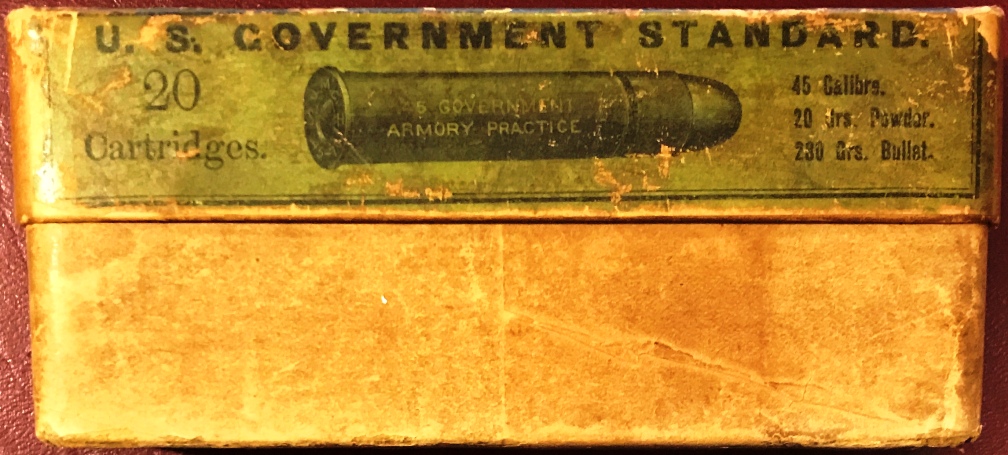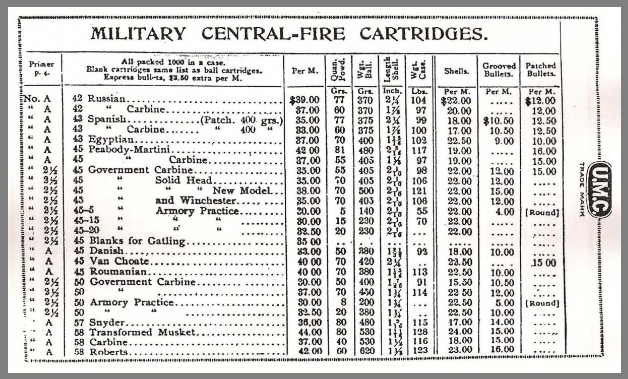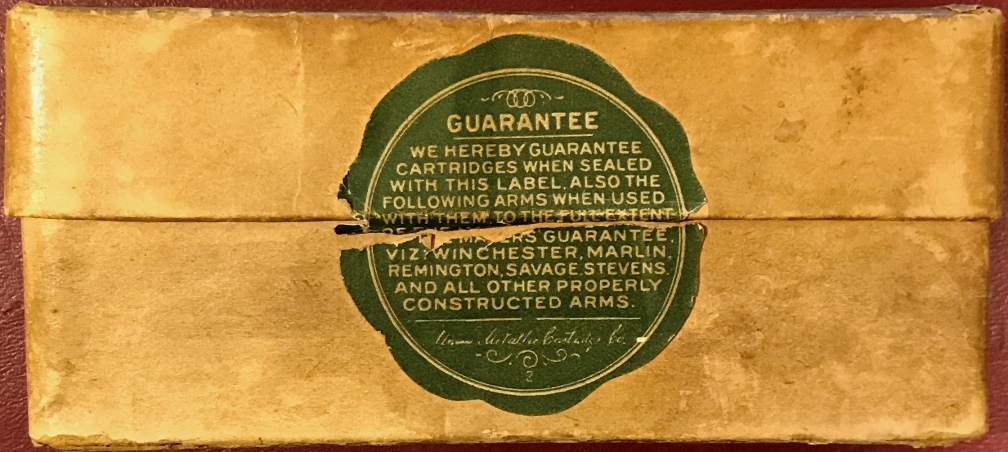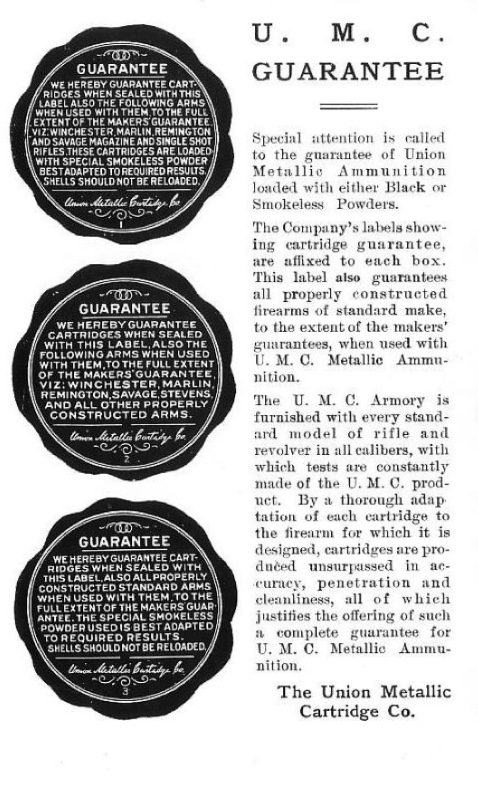|
THE CARTRIDGE COLLECTOR'S EXCHANGE |
|
|
Home of the Old Ammo Guy's Virtual
Cartridge Trading Table
Picture Page June 2018 Please note: Unless otherwise indicated, the pictures on this web site are my property, and should not be used by anyone without crediting the source. A UMC 45-20-230 armory practice box.... I recently bought
this interesting UMC 45-20-230 armory practice box . It was full of
cartridges, but it was obvious
Although the box is marked Government Standard, it probably was not made on contract for the Government. 'Armory Practice' and similar cartridges were listed in the UMC price lists and available to the public beginning about 1886. Initially, the UMC armory practice cartridges were loaded with 5 grains of black powder and a 140 grain lead ball. By 1895, two more armory practice loads had been added, one with 15 grains of black powder and a 230 grain conical bullet, and the other like those that would have originally been in the box shown above with 20 grains of black powder and the same 230 grain conical bullet. The page with the three armory practice loads from the 1895 .
. UMC price list is shown here. In 1896 a fourth load was added, this one with a 35 grains of black powder and a 365 grain bullet. In 1901, a 'carbine' load was added with 25 grains of black powder and a 300 grain bullet, bring the total to 5 loads. In 1904, the number of loads was reduced to three, which included the 5 grain powder charge with the 140 grain round ball, the 15 grain powder charge which was now loaded with a 240 grain bullet, and the 25 grain 'carbine' load with the 300 grain bullet. The 1910 price list, the first to combine the Remington firearms with the UMC cartridges, there were no .45 government armory loads listed.
The green 'guarantee' sealing label on this box of armory practice cartridges was one of three different labels UMC
. . . . . . . . . . . . applied to the backs of their 20 round rifle cartridge boxes. The labels each had a number (1, 2 or 3) printed on the bottom. Numbers 1 and 3 were for smokeless loads, and 2 (the number on the pictured label from this box) was for black power loads. As seemed to be the practice with ammunition makers in the early years of loading smokeless powder cartridges, UMC discouraged the reloading of their smokeless cartridge cases, and the smokeless sealing labels specifically stated 'THESE SHELLS SHOULD NOT BE RELOADED.' I assume this was a liability issue with the company, due to the increased probability of loading errors being made with the new smokeless powder when the loading was being performed by untrained individuals outside of the factory.
. . . . . . Sources:
UMC cartridge catalogs from the International Ammunition Association reference section, various catalog dates as discussed, http://www.cartridgecollectors.org/ammunition-catalogs
.
|

 they
were not original to the box because the cartridges, while having the
correct UMC S H 45-70 headstamps, were loaded with 500 grain bullets. Another
clue was that the torn edges of the sealing label on the back lacked about
1/4" of coming together when the top was in place. Fortunately,
they
were not original to the box because the cartridges, while having the
correct UMC S H 45-70 headstamps, were loaded with 500 grain bullets. Another
clue was that the torn edges of the sealing label on the back lacked about
1/4" of coming together when the top was in place. Fortunately,
 I
was able to spot these problems early on and bought the box and cartridges
for about what the loose cartridges were worth. The cartridges that were
originally in the box would be like the one shown here, with a short round
nosed 230 grain lead
I
was able to spot these problems early on and bought the box and cartridges
for about what the loose cartridges were worth. The cartridges that were
originally in the box would be like the one shown here, with a short round
nosed 230 grain lead
 bullet
secured in place with a deep cannelure in the case neck that is even with the base
of the bullet.
bullet
secured in place with a deep cannelure in the case neck that is even with the base
of the bullet. 

 These
labels first appeared in the 1905 UMC price list, but I suspect they were
being used as early as 1903. Considering that the 230 grain bullet was
changed to 240 grains for the 1904 price list, I would
venture a guess that the box shown above was sold in 1903, or as late as
1904 or 1905 when supplies of cartridges loaded with the 230 grain bullets
might still have been on hand.
These
labels first appeared in the 1905 UMC price list, but I suspect they were
being used as early as 1903. Considering that the 230 grain bullet was
changed to 240 grains for the 1904 price list, I would
venture a guess that the box shown above was sold in 1903, or as late as
1904 or 1905 when supplies of cartridges loaded with the 230 grain bullets
might still have been on hand.